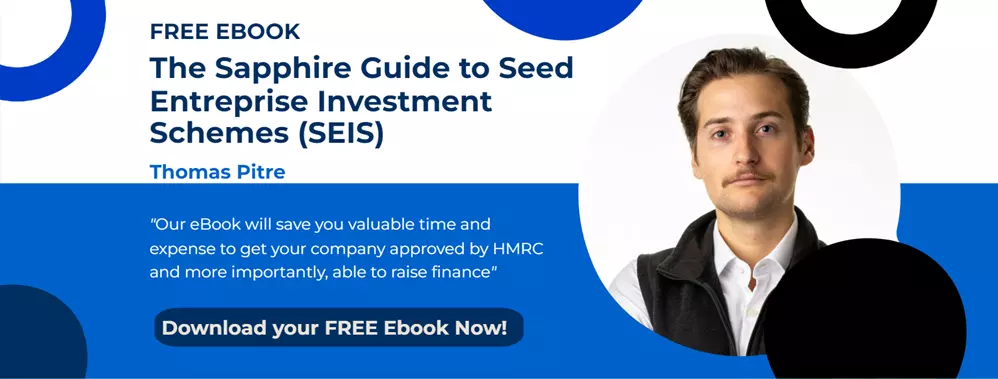 At Sapphire Capital Partners we meet many entrepreneurs who have great business vision and are keen to pursue their ideas through one of the business tax incentive schemes; Seed Enterprise Investment Scheme (SEIS), Enterprise Investment Scheme (EIS), or Social Investment Tax Relief (SITR).
At Sapphire Capital Partners we meet many entrepreneurs who have great business vision and are keen to pursue their ideas through one of the business tax incentive schemes; Seed Enterprise Investment Scheme (SEIS), Enterprise Investment Scheme (EIS), or Social Investment Tax Relief (SITR).
One of the areas where we are frequently asked for advice and guidance is in the area of founder shares, and more precisely, can the entrepreneur or owner of the company benefit from the above mentioned tax schemes?
And the answer to this is that it all depends on your relationship with the company, with the key question being, “Are you connected with the company?”
Under HMRC guidance you will be deemed to be connected if you:
- own more than 30% of the share capital or voting rights,
- are entitled to more than 30% of the assets of the company in the event of a winding up, or
- are a partner, director or an employee of the company.
If you are connected with the company you will not be eligible income tax relief for EIS, SEIS or SITR. You will however will still qualify for Capital Gains Tax benefits.
Let’s look at each of these more closely:
1. Ownership of more than 30% of the share capital or voting rights.
If you have a financial interest in the company, or in any subsidiary of the company, then you are connected if you have more than 30% % of the share capital or voting rights. With more than 30% you are deemed to have ‘control’ of the company, and are therefore are not eligible for income tax benefits under EIS, SEIS or SITR.
These conditions apply throughout the period beginning 2 years before the issue of the shares and ending 3 years after the issue (or 3 years after the commencement of the trade if that followed the share issue). So if you take a 15% stake and are given Income Tax relief, and a year later you take an additional 20% stake, you have become connected, and the relief will be withdrawn.
Shareholdings and voting rights which are held by your associates are also taken into account. Associates are defined as business partners, trustees of any settlement where you are a settlor or beneficiary, and relatives. Relatives are defined as ‘spouses or civil partners, parents and grandparents, and children and grandchildren’. Note that brothers and sisters are not counted as associates for the purpose of the EIS.
2. Entitlement to more than 30% of the assets of the company in the event of a winding up.
Note that when assessing the percentage ownership, loans will be taken into account, and loans which are not considered to be normal commercial loans may have an impact. The main factors which identify a loan as ‘not on normal commercial terms’ is a conversion right, such as a right to acquire shares or interest at a rate above the commercial rate.
It is not just your own shareholding as associate holdings also count. HMRC guidance advises that a person is treated as owning or, as the case may be, controlling, what any associate owns or controls.
For this reason it is prudent for the investor not to make an loans to the company during their period of investment. It is preferable for the investor to guarantee a bank loan or overdraft.
3. Connection by employment
The connected rule also applies to employees, therefore if you are a partner, director* or an employee you are deemed to be connected through that relationship. Note also that an investor is not eligible for relief if an associate is a partner, director or an employee in the company. This restriction applies not only at the time of the share issue, but also for the period two years prior to the share issue and three years after the latter of the share issue or the commencement of trade.
*Note however that under SEIS rules, a director is not treated as an employee and is not connected by virtue of being a director, although if they own more than 30% of shares then they would be connected.
HMRC will look to the business contract between the director and the company to determine if the ‘director’ controls the company or not, with the main focus being on payments which the director receives.
If the director qualifies under SEIS rules, and the company goes on to raise funds under EIS, then the director may also qualify under EIS rules.
HMRC rules are prescriptive in some areas and slighty grey in others, and unfortunately there is no one solution to fit all. Every company is different, and each has to be separately considered. Advance Assurance timing
If you are starting up your business and would like our help please contact us at Sapphire Capital Partners LLP. We are happy to help.


